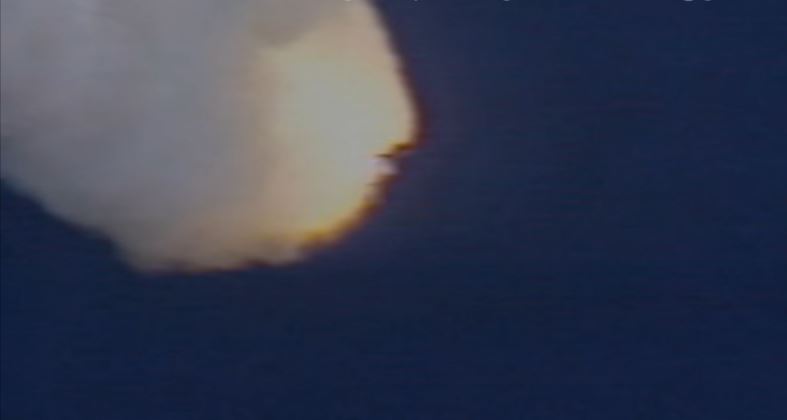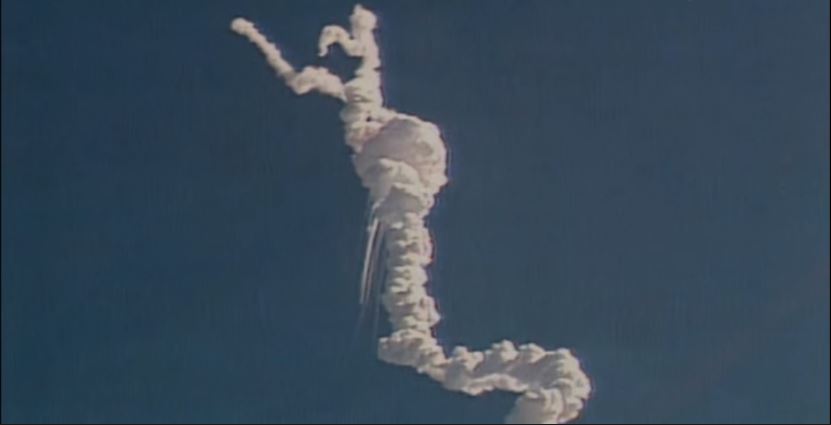‘Challenger: The Final Flight’ is a Netflix original four-part documentary series that examines the case of the 1986 Challenger Space Shuttle, which exploded 73 seconds into its flight and resulted in the deaths of all the 7 crew members that were abroad it. This crew was one of the most diverse ones to be ever assembled by NASA and included a civilian, an Asian-American, and a Black man. Unfortunately, though, because of government pressure, bad decisions, and engineering failures, the flight was never really safe. All of this, including much more, is highlighted in the series, but the one aspect that it doesn’t completely cover is the Challenger’s explosion itself, along with how the crew members lost their lives.
How Did The Challenger Space Shuttle Crew Die?

First things first, the Challenger Space Shuttle didn’t actually “explode.” Even though the term is used by the media and even NASA, it is only applied in the loosest of sense to describe what really happened. The shuttle and its boosters were entirely engulfed in a cloud of smoke and fire just 73 seconds after liftoff, at an altitude of about 46,000 feet. There was no exploding of anything, but the fire was the direct result of the seals, the O-Rings, in the shuttle’s right solid-fuel rocket booster weakening in the cold temperature. Because of this, there was a gas leak and the fuel tank collapsed and tore apart, resulting in the liquid oxygen and hydrogen to completely swamp the shuttle.
Although the fuel tank collapsed early, the Challenger shuttle in itself momentarily remained intact and continued its upward path. It was only when it hit the peak altitude of 65,000 feet did it completely crumble and arch back down towards the Atlantic Ocean. The cabin where the crew members were, hit the water after a full 2 minutes and 45 seconds following the break apart, and all investigations indicate that all 7 of them were alive up until that point. What’s not clear, though, is if they were all conscious. It’s likely that they were not because of the sudden loss of cabin pressure, but some reports do claim that it could have been possible for them to regain awareness in the final few seconds of the fall.

The cabin hit the water at a speed greater than 200 miles per hour, resulting in the force crushing the structure of it and destroying everything inside. Even if the crew was conscious at that point, the cabin could not possibly have enough air left for them to survive for long, especially after impact. This is why NASA’s official reports have subtly deflected any attention from what could have happened in those almost three minutes of flight, and life, after the “explosion.” And, to this date, no investigation has been able to positively determine the cause of death of the Challenger astronauts. While some say that its plausible that they passed away pretty quickly due to oxygen deficiency, others assume that they could have drowned.

But, alas, because the remains of the crew members were only recovered in the cabin, in the Atlantic Ocean, among other debris, in March of 1986, more than a month after the tragedy, all evidence of the reality of what happened to them had been thoroughly washed away. Every study about their deaths since then has proved to be inconsequential. In saying that, though, we should also mention that NASA’s lead accident investigator Robert Overmyer did say that he knew the Commander of the shuttle, Dick Scobee, and had full belief that he would have done everything imaginable to save his crew. He thinks that Dick Scobbe, if conscious, had fought for their survival throughout the few minutes and all the way down in the water. (Featured Image Credit: Netflix)
Read More: Best Space Movies of All Time

